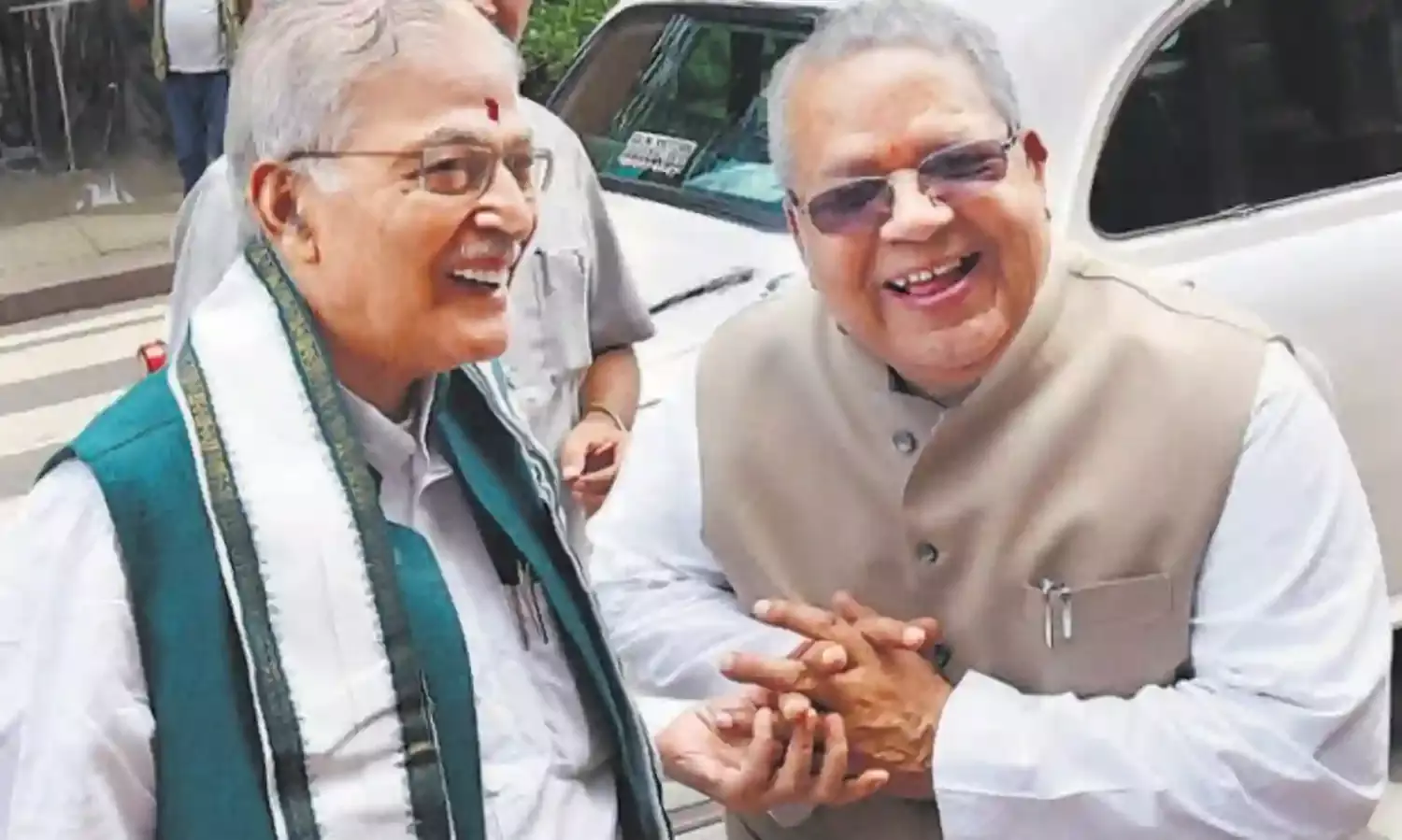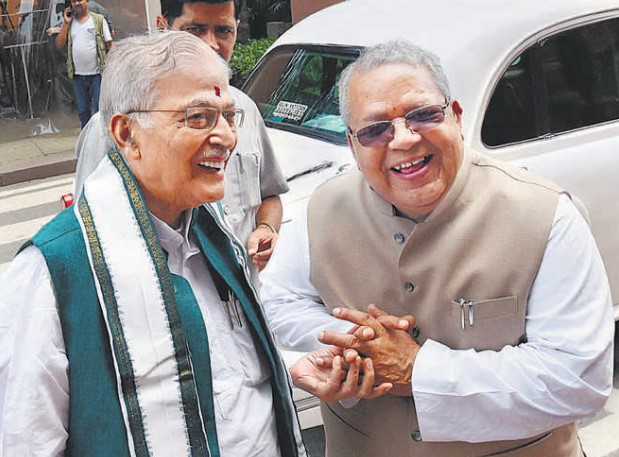BJP Solution Crashes Into Farmers Agitation in Lakhimpur
UP and Bihar

BJP had a Brahmin problem in UP; the solution has, quite literally, crashed into the farmer’s agitation in Lakhimpur Kheri. Before explaining the incident, a look at the Brahmin predicament in UP.
At the very outset in 1947, the Congress more or less internalized the caste pyramid. Pandit Jawaharlal Nehru became India’s first Prime Minister. Pandit Govind Ballah Pant, Chief Minister of UP, which Congressmen once tried to name, Aryavart, land of the Aryans. Once Pant joined Nehru at the Centre, the Lucknow gaddi rotated between Kayasthas, Banias, Jats, Thakurs.
Since participants in this musical chair were all part of the Hindu ruling class or the Savarna, the Brahmin did not feel too inconvenienced. From 1971, it was smooth sailing again – Kamlapati Tripathi, Hemvati Nandan Bahuguna, Narain Dutt Tiwari, succeeded each other as Chief Ministers until 1977.
Later V.P. Singh pushed the huge boulder of Mandal Commission into the pond, resulting in a tsunami of caste politics on an unimaginable scale. Mulayam Singh Yadav, and Mayawati surfaced in UP; Laloo Prasad Yadav, Nitish Kumar, Ram Vilas Paswan in Bihar.
UP and Bihar evolved distinctly. Cornwallis’ Permanent settlement yielded a political structure dominated by Sri Krishna Sinha, Bhumihar and Annugrah Narain Singh, Thakur. It was as a response to this structure that led to a powerful communist movement in Bihar, remnants of which were one of the ignition points for JP’s movement in the early 70s.
In UP, the entire caste pyramid was superimposed on a dying, Muslim dominated feudal structure which had been in abysmal decline since 1856-57. One of the world’s great experiments in cultural commerce when the new rulers adapted themselves to a high civilization with admiration and humility has been hugely misunderstood for a certain reason.
It was overlaid on areas which contained all ancient wonders that was India –– Ganga, Jamuna, Triveni, Kashi or (Varanasi), Ayodhya, Vrindavan (Mathura), Hardwar, Rishikesh. This was the spiritual heartland for the children of Pant, Tripathi, Bahuguna, Tiwari and later even Atal Behari Vajpayee. He pitched his political tent in Lucknow. For Nehru, it was a grand romance, the stuff of aesthetic wonder.
I am sticking only to Brahmin names for this narrative. Like all men of common sense, Nehru too was aware that these “pavitra sthans” had the power which could be regressively used, as they were, by the new electoral politics which fell to India’s lot.
The Congress was the Brahmin’s natural habitat from the beginning of the republic. But the Ram Janmbhoomi agitation on the cusp of 80s-90s, which was in response to burgeoning caste politics after V.P. Singh’s Mandal-Commission gambit accelerated the Congress decline. The Brahmin moved in droves from his natural habitat to the emerging power centre, the BJP. The Muslim vote moved in the opposite direction, sandwiched between intra Hindu formations.
The RSS-BJP combine had a long term and a short term plan. In the long run, its aim was to recover old glory, with the caste pyramid as its central column. To aspire for this design, it had to recast its short term priority. This was to grab power; only then could the longer plan be implemented. For the immediate future it had to resort to some social engineering to cope with the torrent of caste politics aggravated by Mandal. Therefore, the Hindutva think tank bypassed leaders like Kalraj Mishra and settled for Kalyan Singh, a Lodh, as Chief Minister.
This outcome was something of a disappointment for the Brahmin. It was this disappointment that Mayawati’s henchmen sought to exploit. They promised fully furnished housing, metaphorically speaking to the politically homeless Brahmin.
In the 2017 UP assembly elections, the Yogi Adityanath led BJP trounced the Congress to a cipher and romped home with 312 seats in a house of 403. The Yogi had blown the bugle during the Faizabad riots of November 2020.
“UP ab Gujarat banega
Faizabad shuruaat karega.”
(UP will now follow the example of Gujarat
And Faizabad will start that process.)
The Yogi, a Thakur from Garhwal, ran a tough, police state with a heavy spread of Uttarakhand Thakurs in key positions. For the Brahmins raised on stories of the “Pantji” years, this was status reversal.
“Brahmin is angry; Brahmin is angry” became a chant, frequently heard in Lucknow. While still in the Congress, Jitin Prasada, once an acolyte of the Gandhis, set up a Brahmin Chetna Manch. He thought he was flourishing a magnet for the Brahmin vote. This vote is not numerically impressive; it has influence. Prasada was not taken seriously.
Are the Gandhi trio even interested in the February-March state elections? They may just not wish to pocket another defeat before the general elections of 2024. Or has the televised tragedy of Lakhimpur Kheri and the manner in which the siblings are being welcomed given them ideas?
Jitin Prasada, undervalued by the Congress, somewhat eagerly joined the BJP – to inflate its Brahmin content. But he was too small a fry to make much of a difference. This is when the Centre acted. Power was conferred on Ajay Mishra from Lakhimpur. As Minister of state for Home he proceeded to threaten the famers. In “two minutes” he would teach them a lesson.
Was Ashish Mishra, Ajay Mishra’s son, demonstrating power when his convoy mowed down some people, including four farmers and a journalist? With the Supreme Court involved, the Sangh Parivar’s somewhat convoluted “Brahmin” initiative in New Delhi to influence UP elections appears to be souring rapidly.
The “clan” sympathy for the Mishras will play out negatively for the BJP, as long as TRP ratings warrant the Lakhimpur tragedy as the Prime Time pick. The drama of Vikas Dubey’s dramatic death in an encounter last year is still fresh in minds.
The BJP is in a bind. So close to the most important state elections, sacking Ajay Mishra involves a huge loss of face. Replace him with a spate of Vajpayees, Shuklas, Sharmas will be hurried and unseemly.




